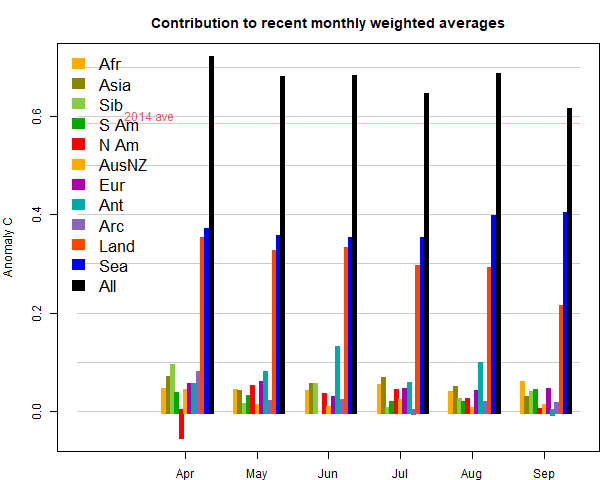The
TempLS mesh anomaly (1961-90 base) rose a little, from 0.641°C in July to 0.673°C in August. This is opposite to the
0.067°C fall in the NCEP/NCAR index, while the UAH satellite TLT index
declined more (0.13°C). There may be a reason for that discrepancy, which happened in the opposite direction last month. Although the land temperatures went down a little, SST went up, by about 0.04°C, which is quite a big month change for SST. It makes it warmest since last November, and could be the first sign of a coming El Niño influence. The reanalysis and troposphere measures do not use SST directly.
As with the reanalysis, there were few prominent patterns in the month. Cool in parts of S America, N Canada, and a large region of A Australia and adjacent ocean. Still warm in E Europe and far N Siberia, and NE USA. Antarctica was the only notably warm place (relatively).
Here (from
here) is the plot of relative contributions to the rise (ie components weighted by area). Note, as mentioned above, the strong effect of the SST rise on the global average:

Here is the temperature map. As always, there is a more detailed active sphere map
here.



